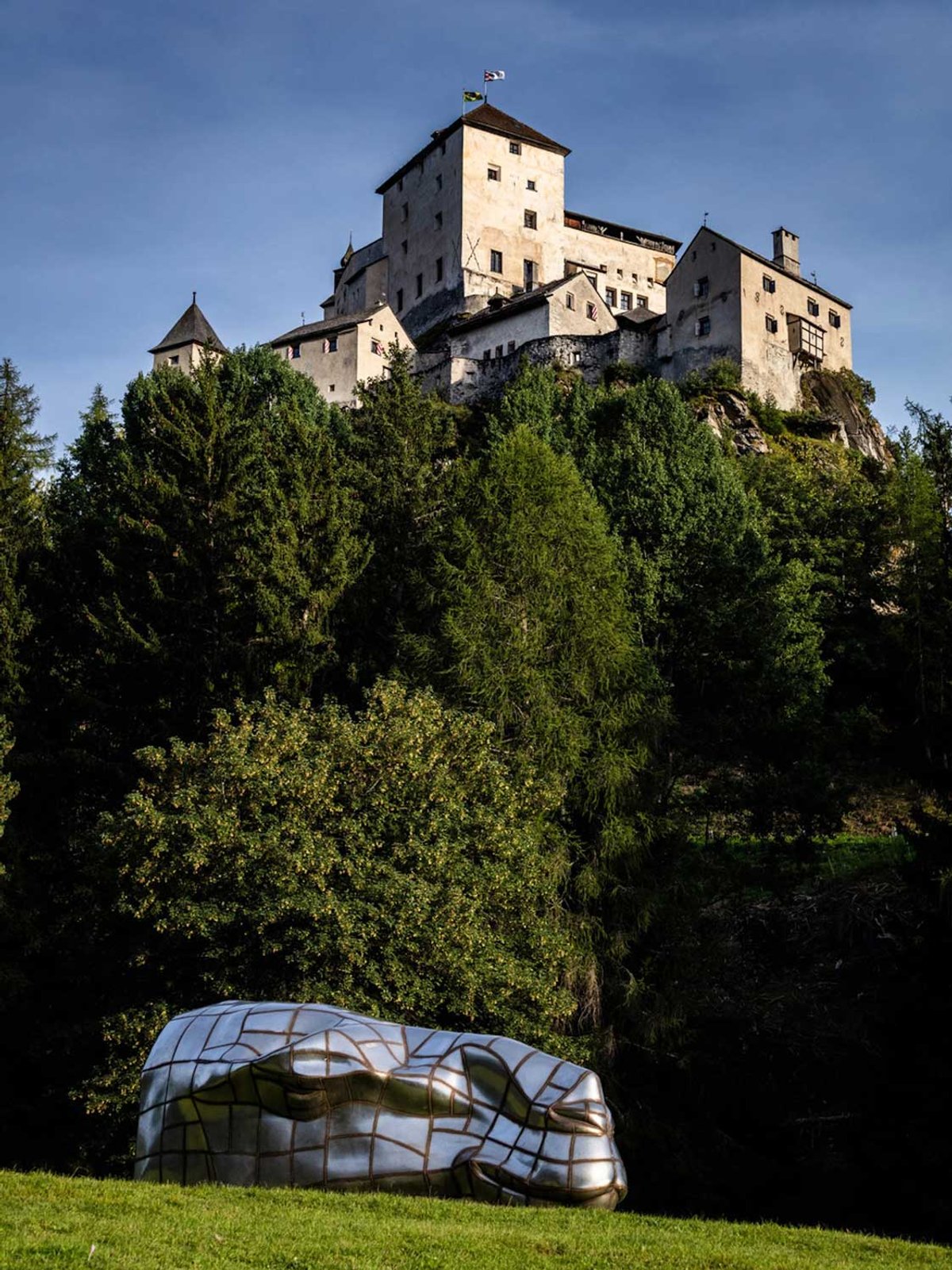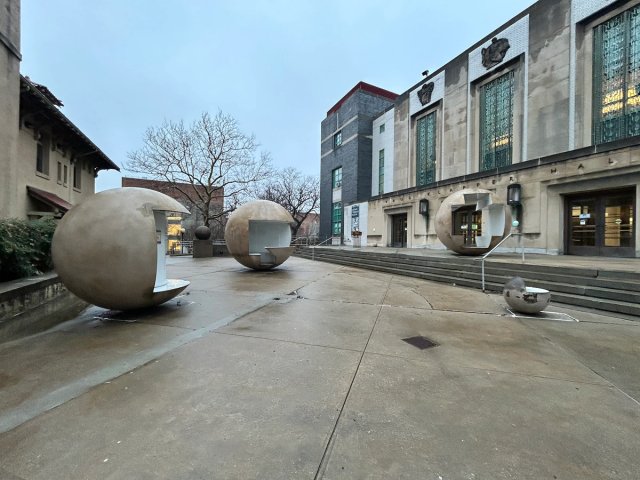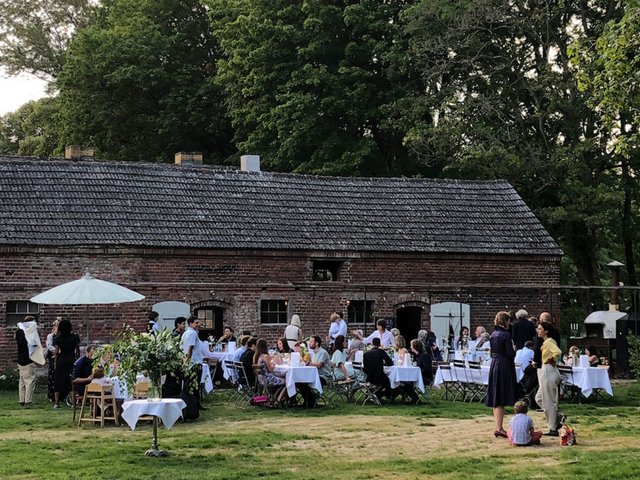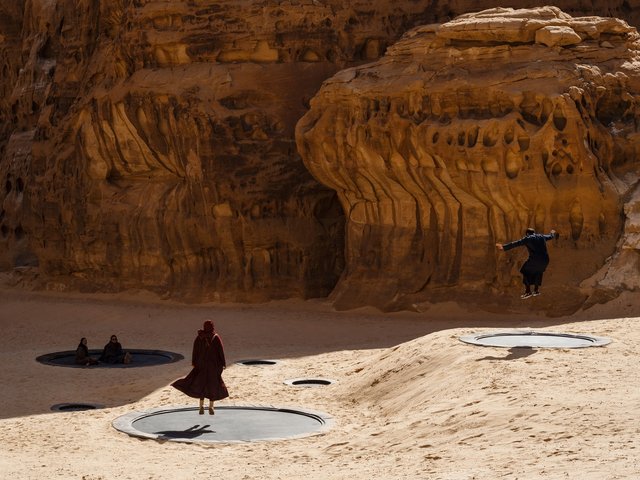High on a hill in the Swiss Alpine region of Engadin sits Schloss Tarasp, an impressive castle thought to have been built in 1040. The fortress has changed ownership over the centuries. It belonged to the Count of Tyrol in the 13th century, later becoming part of an Austrian enclave and then of the short-lived Helvetic Republic in 1803, before passing through a series of private hands. Today, Schloss Tarasp is owned by the multidisciplinary Swiss artist Not Vital, who grew up in nearby Sent and bought this historic mountain retreat in 2016. The castle is part of a foundation—which also oversees a sculpture park, Parkin Sent, and the 17th-century Planta House Ardez—which the artist set up to preserve culture in the region by uniting art, nature and architecture.
Vital came onto the art scene in the late 1970s and 1980s in New York City and has since earned international recognition, exhibiting in both the art and architecture editions of the Venice Biennale. Working in disciplines that include painting, drawing and sculpture, he is best known for what he calls SCARCH—his humorous and sometimes enigmatic sculpture-architecture hybrids that blur the boundaries between the two. Vital moves often between Rio de Janeiro, Beijing and Sent, living a relatively nomadic life.
Vital established his artistic foothold in the Engadin region in southeastern Switzerland in 1998 when he bought Parkin Sent. Originally laid out in the early 20th century to house a private villa, the park had all the accoutrements of a luxurious retreat—a pool, luscious walking paths and a terrace—but the Second World War forced the then owner to abandon the plan. When Vital bought the park, he and his brother revived the overgrown land and began installing Vital’s artwork. In the early 2000s, the artist bought nearby Planta House Ardez, a house dating from 1642, and turned it into the headquarters of his foundation. The house contains a library of books in Romansch (the minority Swiss language) and hosts rotating exhibitions of modern and contemporary art, open to visitors each August.
A sense of playfulness
Parkin Sent is home to several outdoor installations by Vital that encourage visitors to explore the forests and rugged terrain, engaging with nature as they search for each artwork. Open seasonally (Fridays from mid-June to early October), the park includes Punt dals asens (Donkey Bridge) (2001), an installation of aluminium donkey heads on narrow vertical beams, the heads getting higher off the ground as the land below slopes downward. Brave visitors can walk along the pathway while holding rails on either side of them. Playing with perception is another bridge, simply called Bridge (2008), which is inconspicuous and vanishes into the forest, its stainless steel surfaces reflecting the surrounding environment. While the bridge only appears to be invisible, JOSÜJO (Disappearing House) (2007) takes a more literal approach. Resembling a triangle with a grass-covered roof, the structure descends into the ground at the push of a button.
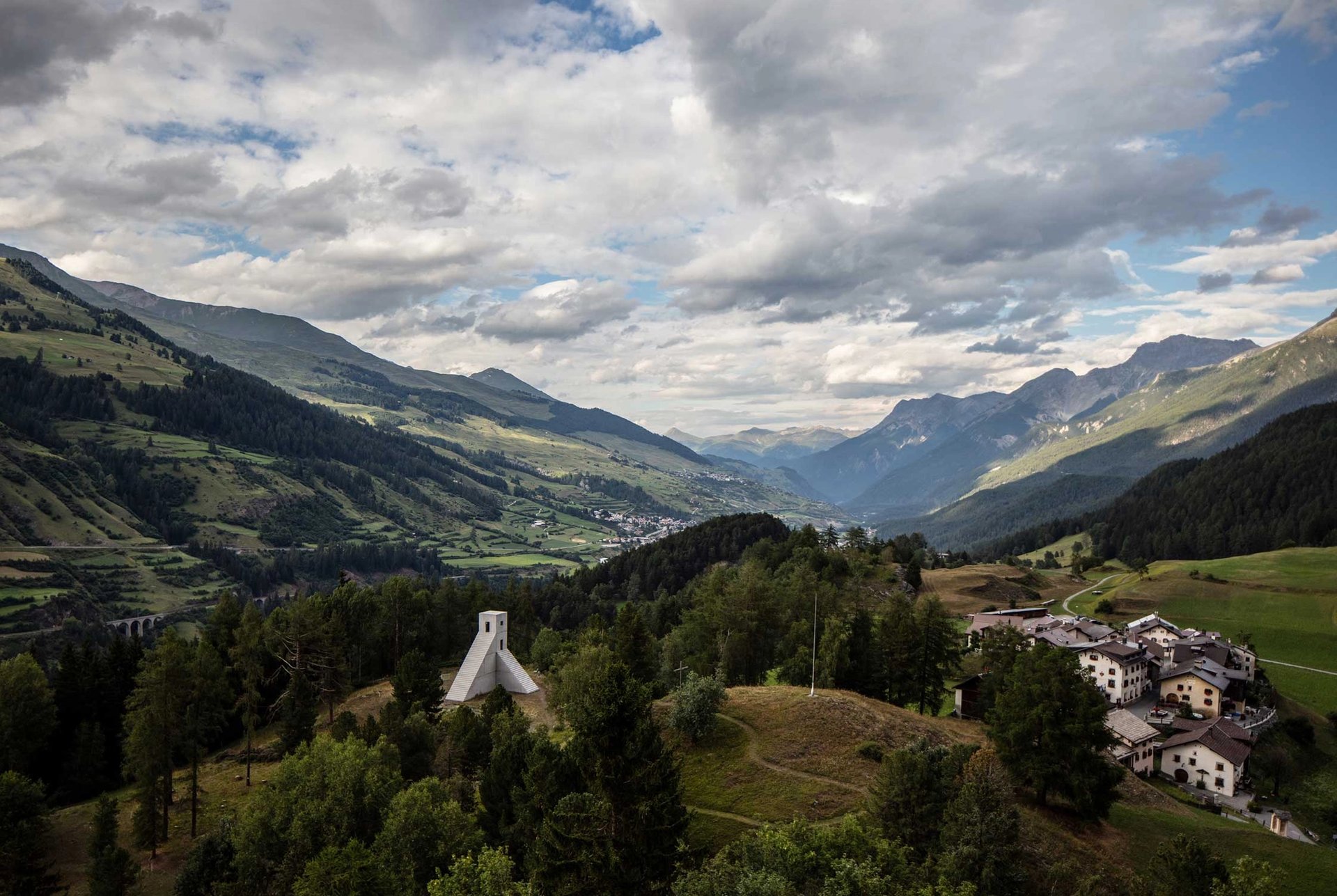
Not Vital's House to Watch the Sunset (2018) is installed in the landscape surrounding Schloss Tarasp
Photo: Eric Powell
With his purchase of Schloss Tarasp, Vital deepened his connection to Engadin. The castle’s interior is both a time capsule of its previous lives and a home to modern and contemporary art—his own and that of fellow artists such as Rirkrit Tiravanija and George Condo. The land surrounding the castle gave Vital additional opportunities to display his sculptures. Here, in 2018, he installed a version of one of his best-known projects, House to Watch the Sunset, an ongoing installation that he began in 2005 in Niger. The tower-like piece resembles architecture, but is stripped of its function—it contains no utilities and defies logic in its construction. Thirteen metres high, the structure has external staircases leading from the ground to each floor, yet none is accessible via another. To climb the tower, visitors have to ascend and descend one set of stairs, turn the corner and climb another to reach the next level. A door adorns every floor, but the number of windows increases by the floor—one on the first, two on the second and three on the third.
Additional pieces by Vital are scattered across the grounds, including several stainless steel sculptures, such as Camel (2018), a giant camel head below the hill with impressive views of the castle high above, and Tongue (2010), a playful, totemic tongue installed closer to the building, all of which can be visited seasonally with a guided tour.
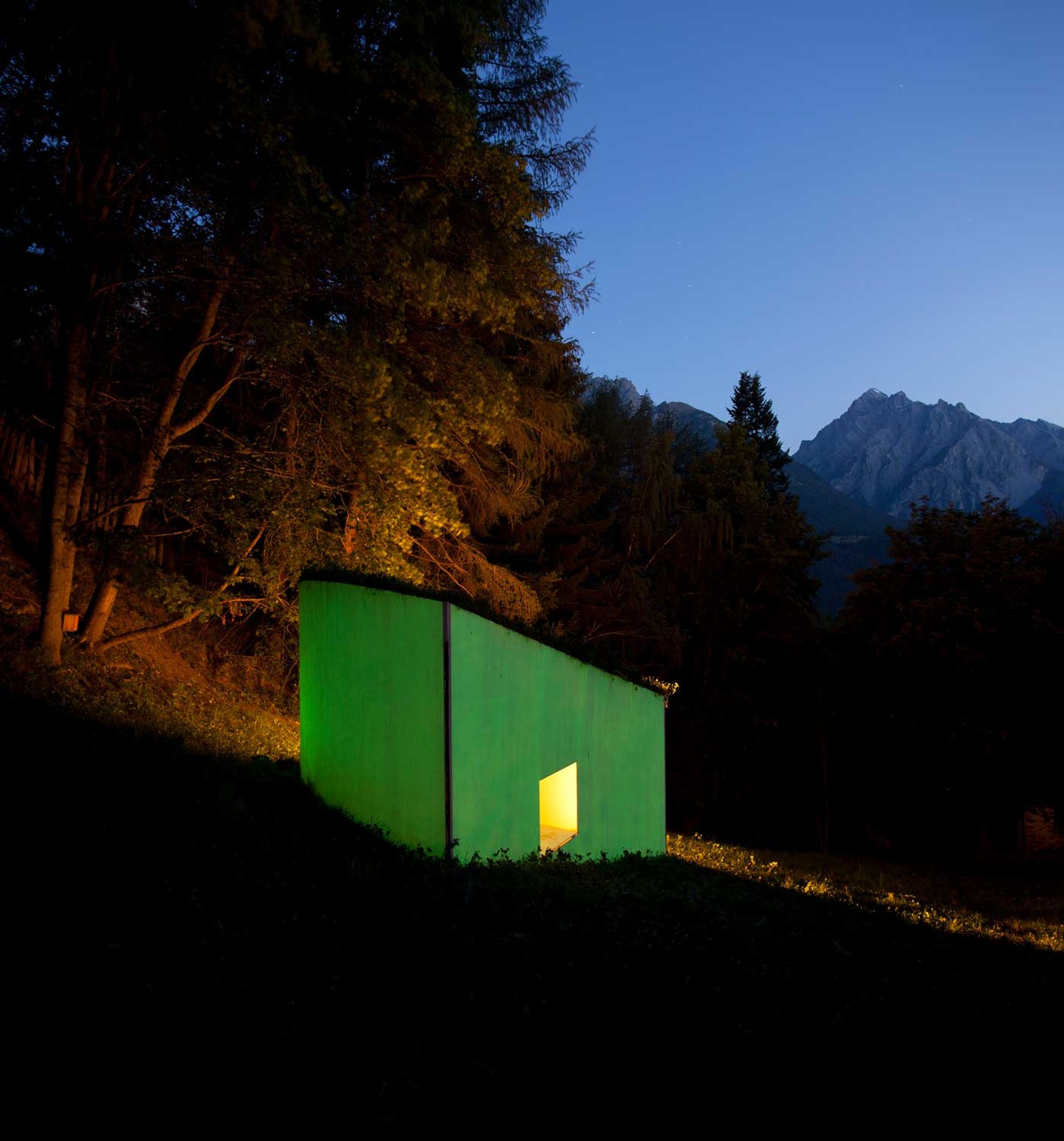
Vital’s JOSÜJO (Disappearing House) (2007) at his Parkin Sent sculpture park
Photo: Eric Powell
Vital is planning to construct a version of House to Watch the Sunset on every continent. For each iteration, he chooses materials in response to the work’s location. For the installation in Niger, Vital used mud and straw, while the Schloss Tarasp version is made of concrete and local sand. Other locations follow a similar trend, including local woods in the installation in Brazil near the Amazon. House to Watch the Sunset is emblematic of Vital’s SCARCH works. Although the piece lacks the infrastructure to function as a house, it does fulfil the second part of its title, providing stunning vantage points to watch the sunset. And, at least at Schloss Tarasp, the work takes on an additional purpose as a watchtower to overlook Vital’s poetic, creative reach across the Engadin region.


